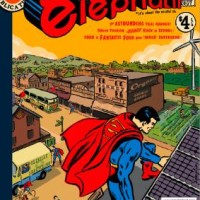Author’s disclaimer: I am not a chemist, not even close. Neither are you, probably. And we shouldn’t have to be, to keep our homes and offices clean. But the underside of most sinks has more chemicals than a pre-WWII laboratory!
We don’t think much about what’s under our sinks. But we should: just take a look at the back of a bottle of Formula 409 and you’ll see what I mean. Many of us care about our food intake, our personal care products and our car pollution—but then we pour bleach down the drain or into our washer. Besides, bleach has zero real cleaning capability. The dirt remains—and the bacteria comes back even stronger after we’ve “killed” it.
Many of us have heard that indoor air quality is far worse than outdoor air, even on polluted days—so we need to be smart about what we use to clean our homes. Every time you clean something with traditional products, you leave a bio-film on the surface that builds up over time, and each time you touch that surface the chemical bio-film rubs off onto your skin. Ick.
Bill Capsalis, a.k.a. “the Godfather of Natural Products,” has done more product testing than you have.
For more: freshideasgroup.com
_____
Glossary of Common Terms:
Biodegradable:A potentially meaningless term. All things degrade over time, even chemicals…even nuclear waste (it has a half-life of 500,000 years or so). A label that reads “biodegradable” is telling the truth—but the question is how long will it take to degrade?
Readily Biodegradable:That’s more like it. This means the product will break down much faster (months vs. years).
Non-toxic: Like “natural,” a vague if not meaningless term. If it’s a chemical of any kind, it’s toxic. There are, of course, widely varying levels of toxicity.
Not tested on animals: Every chemical product approved for use around humans has been tested on animals by someone, somewhere—or it wouldn’t have been approved for use.
Fresh Scent of Nature! The smell of clean is…no smell at all. If you love a “clean smelling” house, use products with pure essential oils. You can tell if the product has pure essential oils by how long the smell sticks around. Ten minutes is fine. Ten hours? Uh-oh.
____
When it comes to your children, pets, countertops and floors, be sure to read labels before buying. Avoid these chemicals:
Alkylphenol ethoxylates (A.P.E.s): Common in detergents and disinfectants, they’re suspected hormone disruptors.
Ammonia is poisonous if swallowed, irritating to respiratory passages when inhaled and can burn skin on contact.
Antibacterial cleansers containing triclosan may be contributing to the rise of antibiotic-resistant germs.
Butyl cellosolve(a.k.a. butyl glycol, ethylene glycol monobutyl) is poisonous if swallowed and a lung-tissue irritant.
Chlorine bleach (a.k.a. sodium hypochlorite), an all-purpose whitening agent, can irritate the lungs and eyes and become toxic organochlorines in waterways.
Diethanolamine (D.E.A.) can combine with nitrosomes (often-undisclosed preservatives) to produce carcinogenic nitrosamines?? that penetrate skin.
Fragrance frequently contains phthalates, chemicals linked to reproductive abnormalities, liver cancer, and asthma in children.
Phosphatessoften water for detergents…and contribute to algae blooms in our waterways, which kills fish dead.
Sodium hydroxide—found in drain, metal and oven cleaners—is irritating to the eyes, nose and throat, burning tissues on contact.
Sodium lauryl sulfate, a common sudsing agent, can penetrate the skin and cause contact dermatitis. Whatever that is, it sure don’t sound good.
_____
For centuries, we cleaned without colored, chemically-synthesized cleaning agents. Though today’s marketing tells us that only chemicals kill germs, these easy-to-make, inexpensive cleaning agents can be just as effective and won’t put our pets, children, water or air at risk of being poisoned:
> Multi-Purpose Surface Cleaner =Combine equal parts water and white vinegar in a spray bottle. Great for kitchen and bathroom countertops, floors and backsplashes (for more scrubbing power, warm up until barely hot and let soak on soap scum and hard water stains)
> Toilet Bowl Cleaner = Undiluted white vinegar.
> Green Windex = Combine equal parts water and rubbing alcohol, plus one tablespoon white vinegar in a spray bottle. Use to clean windows, mirrors, chrome fixtures or ceramic tiles.
> Furniture Polish =Two parts olive oil + one part lemon juice in a spray bottle will dissolve dirt and stains while waxing and protecting the wood. Also makes great shoe polish!
> Ovens and Tough Grease = Baking soda applied to a damp sponge makes for a handy, non-scratch alternative to abrasive powder cleaners.
> Air Freshener = The rind of one orange or lemon. Grind one through the garbage disposal for an instant drain freshener.
> Unclog Drains = Pour one or two handfuls of baking soda followed by 1/2 cup white vinegar down the drainpipe and cover tightly for one minute. Á la elementary school science fair, the chemical reaction will clear any obstructions. When the bubbling subsides, rinse with super-hot water.
> Laundry = For fabric softener, add 1/4 cup of vinegar to the washing machine’s rinse cycle. Add 1/2 cup of lemon juice to the rinse cycle to brighten colors. Reduce the amount of laundry detergent per load: add 1/2 cup of baking soda to the wash.
> Bleach = Hydrogen peroxide-based bleaches break down to water and oxygen in wastewater.
> Sponges? = Don’t use sponges (which store bacteria). Tear up old tees (etc.) and use ‘em for rags. Then wash and reuse.
 Share on bsky
Share on bsky





Read 8 comments and reply